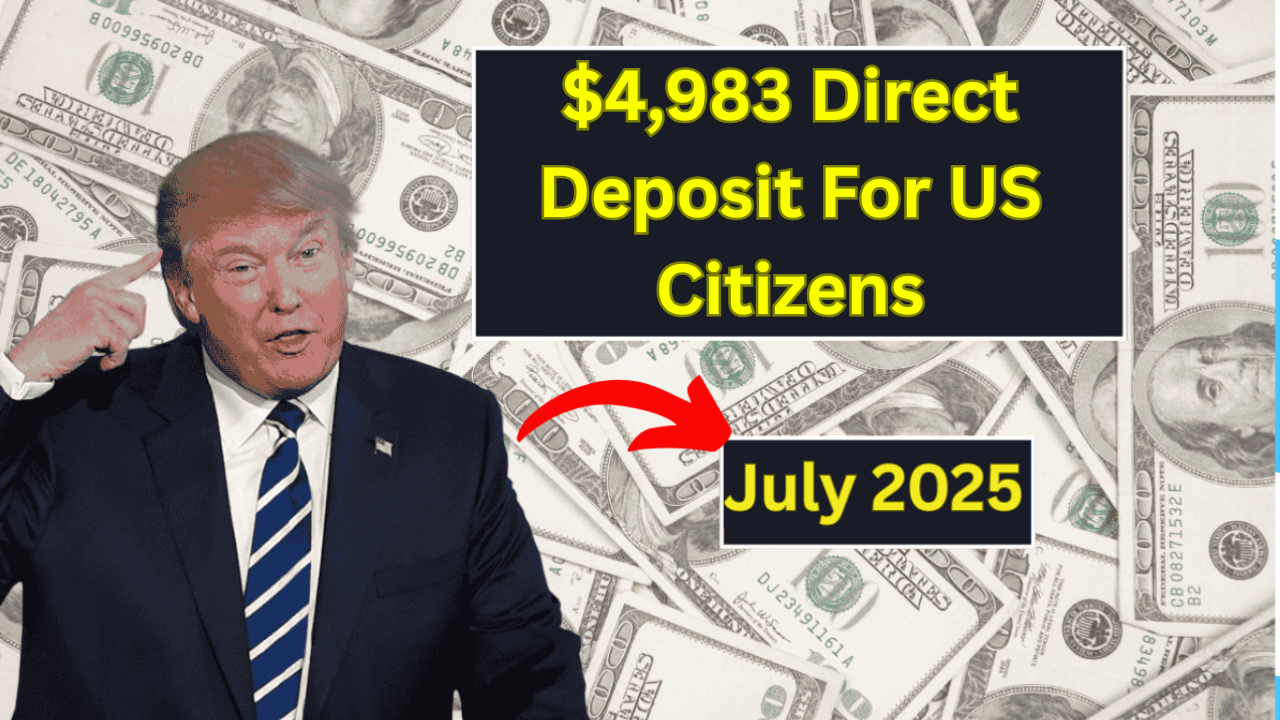$2,000 Direct Deposit for U.S. Citizens in July 2025:For many Americans, July 2025 is bringing long-awaited financial relief. A new direct deposit of $2,000 is being sent to millions of eligible US citizens this month, and for families struggling with inflation, rising rents, and daily expenses, it couldn’t have come at a better time.
This financial aid, driven by federal initiatives, is aimed at supporting working-class families, retirees, and low-income individuals. But not everyone will be eligible for it — so let’s take a closer look at who’s eligible, how to keep track of your deposits, and what steps to take if you’re still waiting on your payment.
Why a $2,000 Direct Deposit Now?
The U.S. government recognizes that many Americans are still recovering from economic shocks, including pandemic-era debt, high interest rates, and rising costs of essentials like housing, healthcare, and groceries.
This $2,000 payment is not a universal stimulus, but rather a targeted effort to help those who need it most — and it’s being distributed via direct deposit through the IRS and Treasury Department.
According to officials, the goal is simple: to help keep Americans financially strong and stimulate local economies by providing financial support to families through mid-2025.
Who is Eligible?
The eligibility criteria for this $2,000 deposit are based on income, tax filing status, and benefit enrollment. Here’s a breakdown of who is eligible:
1. Low- and middle-income taxpayers
If you filed your 2024 taxes and your adjusted gross income (AGI) falls into these categories, you’re probably eligible:
- Single taxpayers earning $75,000 or less
- Heads of household earning $112,500 or less
- Married couples filing jointly earning $150,000 or less
Above these limits a phase-out applies, meaning you may get a smaller amount if your earnings are slightly higher.
2. Social Security, SSDI, and SSI recipients
- Seniors and individuals with disabilities who receive monthly benefits are also included in this round. The IRS will use data provided by the Social Security Administration to ensure these payments reach eligible recipients.
3. Veterans and those receiving VA benefits
- Veterans receiving VA disability or pension benefits may also be eligible – no need to apply separately if your information is up to date.
4. Families with dependents
- Families with children or dependents may receive additional funds, in some cases up to $500 per dependent.
When Will the Payments Arrive?
The IRS has already begun processing payments, and here’s the general payment timeline:
| Recipient Type | Expected Payment Date |
|---|---|
| Direct deposit (e-filed taxes) | July 17 – July 24, 2025 |
| Paper checks (by mail) | July 25 – August 7, 2025 |
| Social Security/VA/SSI beneficiaries | July 19 – July 26, 2025 |
To get the fastest payment, recipients are advised to ensure their direct deposit details are correct and up to date with the IRS.
How to Check Your Payment Status
If you’re not sure if you’re eligible and when your money will arrive, you can:
- Visit the IRS’s “Get My Payment” tool on IRS.gov
- Log in with your tax ID and look for “2025 Relief Payment Status”
- Verify your bank account or mailing address
- Enable notifications so you’ll be notified when a payment is sent
If your information is out of date or you’ve recently changed your bank account, you may see a delay, or your check may be mailed late.
What if You Don’t get a Payment?
If you’re eligible but haven’t received $2,000 by mid-August:
- File a payment trace with the IRS (15 days after the expected date)
- Call the IRS Economic Relief Hotline
Check for the “Recovery Rebate Credit” on your 2025 tax filing – you may be able to claim the missed payment then.
A Meaningful Boost for Millions
While $2,000 can’t solve all financial challenges, it can make a big difference for many. It can pay a month’s rent, pay off credit card dues, help with child care, or simply provide peace of mind.
The direct deposit model has proven to be efficient and secure, ensuring funds reach the right people with minimal delays. For retirees, working parents, individuals with disabilities, and veterans – this payment is more than just money; it’s a recognition of ongoing struggles and a helping hand from the government.
Final Thoughts
If you’re among those eligible, keep an eye on your bank account in the coming days. Make sure your tax information is up to date, and feel free to reach out if something looks amiss.
The $2,000 direct deposit in July 2025 represents a pivotal moment in the country’s efforts to support its citizens during difficult times — and if you’re on this list, your relief could be just one deposit away.






